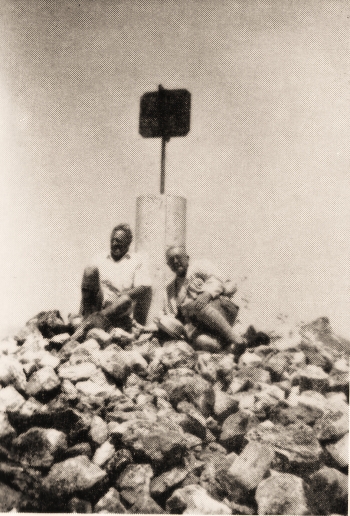In Memoriam
Since the publication of the last Journal the following members have died: F. H. Slingsby, Bentley Beetham, A. F. Falkingham.
F. Hugh Slingsby
By the death of Hugh Slingsby at his home in Sussex on February 20th, 1963, the Club lost one of its most loyal and devoted members. He came from one of Britain’s great mountaineering families, being a nephew and godson of William Cecil Slingsby who was President of the Y.R.C. from 1893 to 1903.
Hugh Slingsby was born in 1894, he was a scholar of Winchester and of New College, Oxford. During the 1914/18 war he served in France with the South Staffordshire Regiment; he was wounded several times and was awarded the Military Cross.
After taking his degree he passed high into the Civil Service and spent most of his career as Assistant Keeper of Public Records, a position from which he retired in 1959. He was also a Barrister of the Inner Temple, although he did not practise.
Hugh joined the Club in 1924; he was an enthusiastic pot-holer and a regular attendant at the Gaping Gill meets in the late twenties and early thirties. Although his work carried him to the south of England and he remained there after his retirement, he was a most regular supporter of the Scottish Whitsuntide meets, at which he proved to be a very strong walker, putting in long distances with complete imperviousness to all weather conditions. He rarely missed the Annual Dinner and to come to the Hill Inn meet he often used to set off on foot from Grassington and other unlikely places.
He was elected to the Alpine Club in 1932 and regularly attended all the London meetings. In spite of being somewhat handicapped by his war wounds he climbed in the Alps, Norway and the Pyrenees, and with Frank Smythe in Corsica. He often travelled up for week end meets in Yorkshire even after he had retired and it was evident that these days spent on his native moors gave him immense pleasure and were a source of refreshment.
Only a year before he died Hugh climbed to the top of Table Mountain; he had been prevented from making this ascent years ago by the heat, and, in spite of the effort required, it made him very happy to do it on his last visit.
The older members of the Club will sadly miss Hugh’s cheerful presence, his quiet humour and his helpful knowledge of many un usual places.
F.S.B.
J.H.
Bentley Beetham
Bentley Beetham was a Life Member of the Club. He spent the greater part of his life as boy and later master at Barnard Castle School; with so much wild country near at hand it is not surprising that he took up the study and photography of birds. Birds naturally led him into having a most intimate knowledge of the whole of Upper Teesdale and of the possibilities in the district for skating, ski-ing and rock climbing which were his favourite pursuits for more than 40 years.
From 1919 onwards Beetham was climbing regularly in the Alps for a number of years and his partnership with Somervell was prob ably one of the most powerful guideless combinations of that time, including the outstanding achievement of 35 Alpine climbs in six weeks. He also climbed in Norway, the Tatra and the High Atlas, which he knew as well as any British climber. It was therefore natural that he should be chosen as a member of General Bruce’s 1924 Everest Expedition. By ill luck a severe attack of sciatica prevented him from taking part in any high altitude climbing, though he got as far as Camp 3.
On British climbs, he was with Frankland when, in 1921, they made the second ascent of Scafell Central Buttress by combined tactics on the Flake Crack[1]. He joined the Y.R.C. in 1925. In spite of being handicapped by an injury to his ankle, sustained on the Grandes Jorasses, he remained to the end of his life a very strong goer in the mountains; his superb icemanship is mentioned in Ernest Roberts’ memoirs when, in 1927, he led up a vertical ice wall on the traverse from Piz Glüschaint to Piz Sella—”one of those feats which mark a man out from his fellows”.
Many of the now well-known climbs on Shepherd’s Crag and Coombe Gill were discovered and excavated by Beetham and many mountain lovers owe their introduction to the hills to his school camps. An example of his amazing toughness was a fall on Raven Crag some twenty years ago in which he fractured his skull in six places; nobody but he could have survived and made such a wonderful and complete recovery.
Bentley was a shy and retiring man but, once you got to know him, a delightful companion on the hills, with a fund of information on natural history and his mountaineering experiences. He died on April 5th, 1963, and his ashes were scattered on Shepherd’s Crag.
J.C.A.
J.H.
[1] Y.R.C.J., Vol. V, No. 15, page 9.

